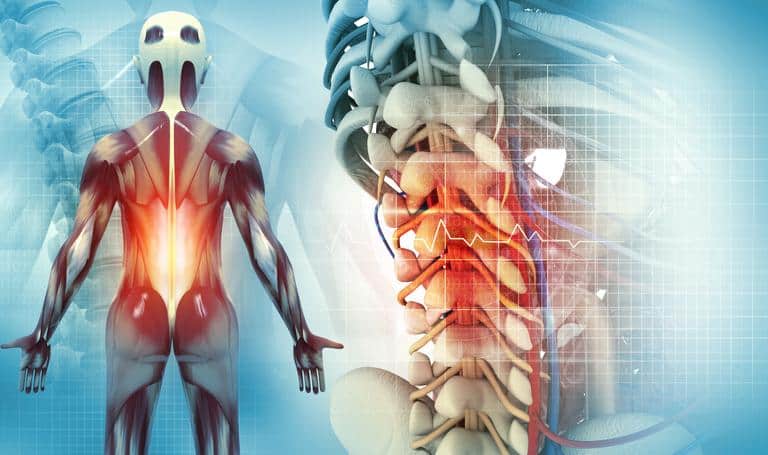

(844) - 444-4444

Spinal stenosis is a common, oft-misunderstood condition that can develop after a New York car accident. The space inside the backbone becomes too small, squeezing the spinal cord and nerves running through the spine, according to Mayo Clinic.
Someone diagnosed with spinal stenosis after a car accident can experience significant, life-altering pain. Ordinary daily tasks, once taken for granted, can become difficult or impossible to accomplish. If those symptoms were caused by a negligent driver, you may be entitled to compensation for pain and suffering.
Like most medical conditions, symptoms of spinal stenosis can vary markedly depending on the person. Some people may experience excruciating pain, tingling, numbness, and muscle weakness, while others may experience more mild, though notable, symptoms.
When symptoms do occur, they can unfortunately start slowly and worsen over time.
According to Mayo Clinic, spinal stenosis most often occurs in the lower back and the neck.
Someone with symptoms suggestive of spinal stenosis are generally well advised to seek medical care. Spine doctors and spinal stenosis surgeons can help diagnose the condition with various diagnostic imaging tools, including an MRI or CT scan. These diagnostic tools can help a medical professional identify precisely what is wrong with the spine and find potential damage to discs.
According to some sources, most people experience spinal stenosis because something happens to reduce the amount of open space in the spine. This can include herniated disks, thick ligaments, tumors, and spinal injuries.
The impact of a car accident needn’t be major to displace or herniate discs in the spine. A herniated disc occurs when a “intervertebral disk” (the cushion between vertebrae) is compressed or torn. When this happens, it can lead to severe pain and weakness.
Spinal injuries are common after a car accident, which can cause bones in the spine to break or become displaced. If you suspect you were injured in a car accident, a medical provider can help you identify the nature of your injury so you know your situation (including diagnosis and prognosis) going forward and can act accordingly.
The human spine comprises three sections, one of which being known as the lumbar spine. The lumbar spine is the lower spine. It includes five vertebrae beginning just below the thoracic spine and ending at the top of the sacrum bone.
Lumbar stenosis is a narrowing of the space around the spinal cord that restricts space for the nerves branching off it. As explored above, symptoms of lumbar stenosis can include pain or cramping in one or both legs, as well as back pain.
Another section of the spine is the cervical spine, which consists of seven vertebrae beginning at the base of the skull and extending to the bottom of the neck near the collarbone and shoulders.
While the vertebrae that make up the cervical spine protect the upper spinal cord from serious injury, the cervical spine itself may be injured from sudden and traumatic blunt-force trauma.
Common cervical spine injuries include stenosis, radiculopathy, herniations, bulging, spinal cord injuries, and even fractures of the intervertebral disc itself. These types of cervical spine injuries, and others, can potentially result from a motor vehicle accident, especially one involving whiplash.
When the cervical spine has stenosis, the reduced space could cause your spinal cord or nerves to be irritated, compressed, or pinched, leading to debilitating symptoms that may include:
Someone looking to assert a claim for pain and suffering after a New York car accident will need to mindful of the “statute of limitations,” among other potential deadlines. A statute of limitations is a rule that provides those with a legal cause of action a particular timeframe within which a lawsuit must be brought. In other words, if the person with the cause of action wants to sue a liable person for damages, the lawsuit must be filed within a specified period.
An experienced New York car attorney can help identify the relevant statute of limitations to ensure that an injured person is not time-barred from asserting a claim for pain and suffering. Every situation is unique.
Your diagnosis and prognosis after a car accident are fluid things that can change during the course of treatment. If you are injured in a car accident and receive a spinal stenosis diagnosis, call the experienced car accident attorneys at William Mattar P.C., at 844-444-4444, or complete the online form requesting a free consultation. We can help you obtain maximum compensation.





